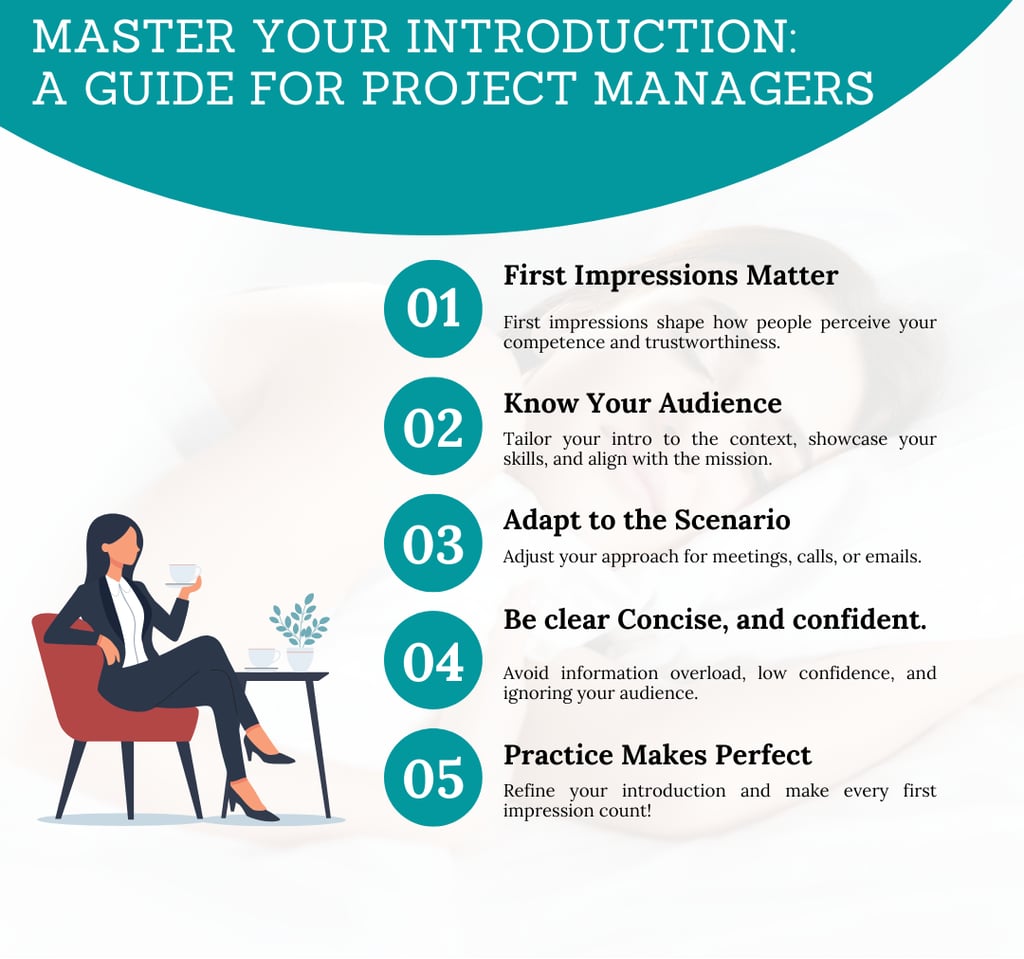Beyond 'Hello: Crafting Project Manager Introductions That Leave a Lasting Impact
A powerful introduction can open doors to better communication and stronger relationships. Explore actionable tips for creating introductions that reflect your confidence and professionalism.
Iyanna Trimmingham
11/6/20243 min read


“You never get a second chance to make a first impression.”
This timeless adage captures the essence of why introducing yourself effectively is crucial in both personal and professional settings. For project managers, a strong introduction can set the stage for successful collaborations, build trust, and align teams toward shared objectives.
In this article, we’ll explore why making a powerful first impression matters, how to prepare and craft a compelling introduction, and the techniques to adapt your introduction for various scenarios. By the end, you’ll have the tools and confidence to introduce yourself like a pro, leaving a lasting impact on your audience.
The Importance of a Strong Introduction
Why First Impressions Matter
Studies show that people form opinions about others within seconds of meeting them. A well-crafted introduction creates a positive, memorable impression that can influence how others perceive your competence and credibility.
In professional settings, first impressions often dictate whether you’re seen as approachable, capable, and trustworthy.
The Role of a Project Manager
As a project manager, you are often the face of your project, representing your team and its goals to stakeholders. A strong introduction establishes your authority and sets a collaborative tone.
Your introduction is an opportunity to position yourself as a confident leader who understands the needs of the team and the organization.
Preparing Your Introduction
Know Your Audience
Tailor your introduction based on who you’re speaking to, whether it’s stakeholders, team members, or senior executives.
Consider their interests, expectations, and the level of detail they need to know about your role.
Research and Personalization
Before introducing yourself, research the audience and context. For example, in a kickoff meeting, highlight how your leadership aligns with the project’s goals.
Use personalized details that resonate with your audience, such as shared objectives or organizational priorities.
Crafting Your Introduction
Opening Statement
Start with a compelling hook that grabs attention, such as a concise summary of your role or an insightful observation about the project or team.
Example: “As the project manager for this initiative, my goal is to ensure we deliver outstanding results by fostering collaboration and staying aligned with our strategic objectives.”
Highlighting Key Skills and Experience
Share your most relevant skills and achievements in 1-2 sentences. For example, “I have 8 years of experience leading cross-functional teams to execute high-impact projects on time and under budget.”
Aligning with Organizational Goals
Showcase how your role contributes to the organization’s success. Example: “This project is pivotal to our digital transformation strategy, and I’m here to ensure that we meet our objectives efficiently and collaboratively.”
Techniques for Different Scenarios
In-Person Meetings
Make eye contact, offer a firm handshake, and maintain an open posture.
Speak clearly and confidently, ensuring your tone matches the formality of the setting.
Virtual Introductions
Use a professional backdrop and ensure good lighting. Start with a warm smile and clear, enthusiastic tone.
Example: “Good morning, everyone. I’m Iyanna, and I’ll be leading this project to streamline our processes. I’m excited to work with all of you.”
Written Introductions
Keep it concise and professional. Include your role, key responsibilities, and how you intend to contribute.
Example: “Hello Team, I’m Iyanna, your project manager for this initiative. My focus is on ensuring clear communication and timely execution as we work toward our shared goals.”
Common Mistakes to Avoid
Overloading Information
Avoid overwhelming your audience with excessive details. Stick to key points that are relevant to the context.
Lack of Confidence
Hesitation or uncertainty can undermine your introduction. Practice beforehand to ensure a confident delivery.
Ignoring the Audience
A generic introduction can come across as impersonal. Always tailor your introduction to your audience’s needs and expectations.
Real-Life Examples
Case Study 1: Successful Team Kickoff
A project manager began a team meeting with: “I’m thrilled to lead this talented team as we embark on a mission-critical project to enhance our customer experience. My focus is on ensuring we collaborate seamlessly and meet our timeline with excellence.”
Why it worked: It was enthusiastic, team-focused, and aligned with organizational goals.
Case Study 2: Stakeholder Meeting
Introduction: “Good afternoon, I’m Iyanna, and I’ve been brought on to oversee this project as part of our broader strategic initiative to reduce operational costs. I look forward to aligning our efforts for maximum impact.”
Why it worked: It was tailored to the audience’s priorities and communicated authority.
A strong introduction is a cornerstone of effective communication, especially for project managers who must inspire trust and collaboration from the outset. By understanding your audience, crafting a concise and impactful opening statement, and tailoring your approach to different scenarios, you can leave a positive and lasting impression.
Remember, practice and refinement are key. Take the time to develop and rehearse your introduction, and soon, introducing yourself will feel as natural as leading a team.
The relationships and opportunities you build often hinge on that first moment of connection.
Make it count!

